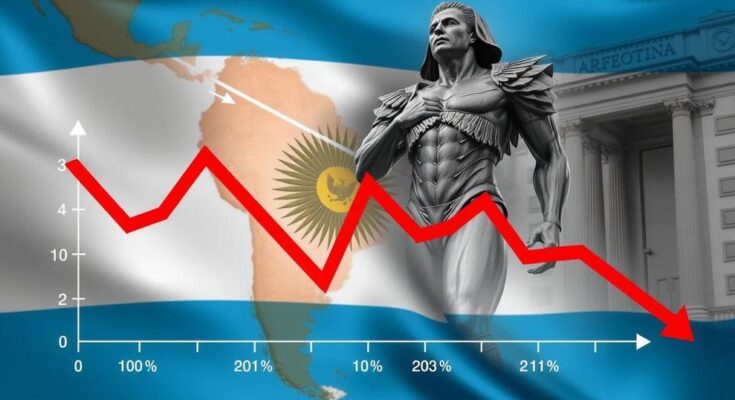Argentina’s economy contracted 2.7% year-on-year through October 2024, with significant drops in fishing (49.9%) and construction (14.5%). Despite these challenges, President Javier Milei claimed the recession is over, citing a 3.9% recovery in the GDP from the previous quarter. The EMAE remains stable, showing growth in mining, agriculture, and financial services.
The Argentine economy experienced a decline of 0.7% in October, leading to an overall contraction of 2.7% year-on-year from January through October 2024, as reported by the National Institute of Statistics and Census (Indec). This downturn is primarily attributed to significant reductions in the fishing industry, which fell by 49.9%, and construction, which saw a decline of 14.5%. The government’s austerity measures under President Javier Milei, including the suspension of public works, have further exacerbated these economic challenges.
In addition to fishing and construction, community and social services reported a decrease of 4.3%, while the manufacturing sector contracted by 2.3% and wholesale and retail trade shrank by 2.1%. Despite this, President Milei expressed optimism regarding the country’s economic trajectory, suggesting that the recession had concluded, especially following a 3.9% recovery from the previous quarter’s GDP decline of 2.1%.
The Indec’s Monthly Economic Activity Estimator (EMAE) has shown stability over the past six months, with multiple sectors reflecting interannual growth. Notably, mining and quarrying increased by 7.4%, agriculture, livestock, hunting, and forestry grew by 2.3%, and financial services saw a rise of 1.8%. This estimator serves as a valuable tool for economists to project quarterly economic changes, having previously recorded substantial growth rates in 2021 and 2022.
The recent economic data from Argentina, issued by Indec, outlines the performance of various sectors within the country’s economy during the first ten months of 2024. As President Javier Milei implements austerity measures, the impact on the economy has become evident, particularly in sectors such as fishing and construction, which have experienced profound setbacks. Understanding these statistics is crucial for assessing the country’s economic outlook and addressing ongoing challenges. The EMAE is a key indicator in evaluating economic performance and future growth trends across all productive sectors in Argentina.
In summary, Argentina’s economic environment continues to face significant obstacles, as highlighted by the 0.7% decline in October, culminating in a 2.7% contraction year-on-year. Austerity measures have played a critical role in these outcomes, with reductions across multiple sectors. Nonetheless, the government maintains a positive outlook, citing improvements in certain areas while cautioning about the widespread effects of austerity on the economy’s recovery.
Original Source: en.mercopress.com




